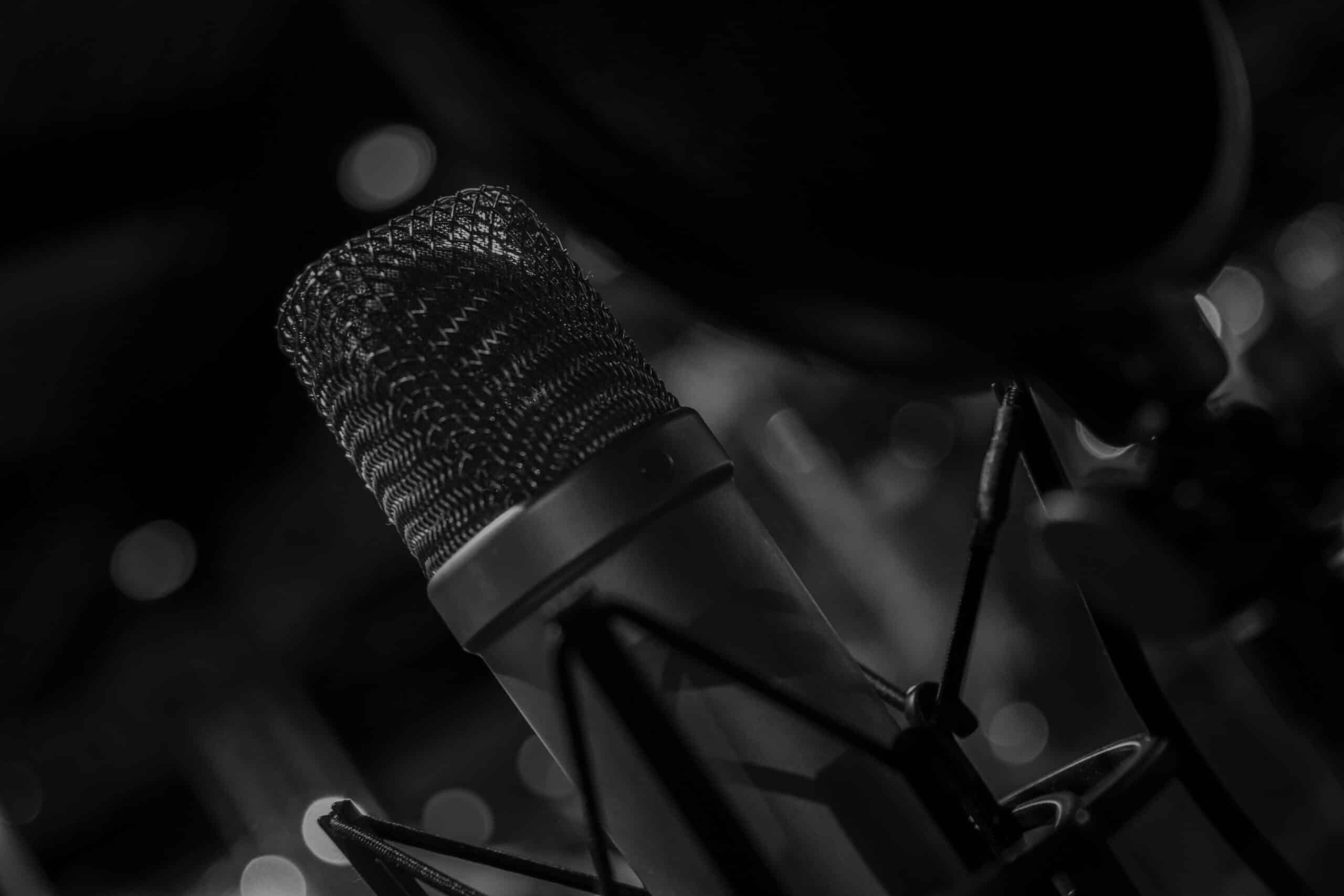What Is Audio Media Production?
In the digital age, audio media and music production takes many forms. It shape-shifts into a powerful tool for communication or a way to educate and entertain. It has a wide range of uses and is becoming more important in communication and entertainment. In this article, you’ll learn about audio media production, its forms, importance, stages of production, and a lot more. So, let’s get started.
Defining Audio Media Production
Audio media production is a complex process that involves the use of sound technology and creative skills to create tracks for different purposes like sonic branding or movies. Since it’s such a vast field, it can be divided into various categories.
However, those involved in movie audio production must have an understanding of how to capture, edit, and produce audio that resonates with the target audience. Now, let’s get into the different types of audio media production.
Types of Audio Media Production
Nowadays, audio media and sound production are the center stage of content. This is what makes the content captivating and brings it to life. When you produce music, you need to know that audio and sound production can divided into multiple types that include:
Music Production
Music production is the process where artists, mixing and mastering engineers, musicians, and vocalists all collaborate to create mesmerizing tracks. You need to know that the music production process involves multiple stages like recording, editing, and mixing and mastering.
Podcast Production
The use of podcasts has increased rapidly in recent years. This has given individuals and organizations a platform to share stories, ideas, and expertise. The podcast production process starts from ideation and transitions into different stages, like script writing, recording, and editing.
Radio Production
Though live performances on traditional radio shows aren’t as popular as they once were, they remain a preferred option for a niche audience. Producers must create content that will grab the listener’s attention, and to do so, they must know how to use studio recording equipment.
Audio Advertising
Companies advertise their products or services through commercials with the hope they will grab your attention so you can buy from them. This process involves crafting sound, music, and voice-over tracks that resonate with the audience and capture and retain their attention.
Sound Design
This type of audio media production focuses on enhancing the auditory experience of TV commercials, movies, games, and pretty much everything else. When creating sound effects, audio engineers often use music technologies and mixing consoles.
The Importance of Audio Media Production
The world is becoming more visual every day, but sound shouldn’t be left behind. It’s what puts life into the visuals. Audio media production is important for a number of reasons such as:
Accessibility and Engagement
Out of all mediums, audio is the most accessible. This makes it the perfect tool to reach a diverse audience. People can listen to something while commuting or even sing catchy radio jingles.
Storytelling and Emotion
Audio producers are like master storytellers who don’t use words or pictures. Instead, they use sound effects, music, and composition to push out emotions and keep people locked in on what’s happening. Using only sound, they create suspense and fully immerse you in a narrative.
Education and Information
When it comes to education, audio is a must-have. Whether it’s an audiobook, documentary, or info-filled podcast, they all teach people in ways that are more exciting than sitting at a desk all day long. Using audio for education has made learning easier, too, since you can learn while on the move.
Branding and Marketing
Audio branding is important for companies as they can use it to create catchy jingles and ads that make brands memorable and unique. Audio also lets businesses connect with their audience in a personal way and allows them to integrate sonic branding into their marketing efforts.
Audio Media Production Process
If you want to be a music producer or sound engineer, you need to know a lot of your work will be divided into three phases. Let’s look at each one in more detail.
Pre Production
Before diving into the world of audio and audio post-production studios, you need to know what happens in the preproduction phase. This includes:
- Conceptualization and storyboarding – during conceptualization, artists and producers brainstorm ideas that help shape the overall vision for the project. This initial phase sets the creative direction and defines the mood, style, and artistic intent of electronic music.
- Picking recording gear – the quality and character of the final audio depend on the right recording gear. You need to make sure to carefully select microphones, digital audio workstations (DAWs), and other equipment so they match what the project needs.
Production
After all the ideation is complete, audio producers and sound artists move on to the production phase. This stage revolves around two key things, that include:
- Recording sessions – this is where everything comes together. Musicians, vocalists, and sound engineers collaborate to get the raw essence of the project down. The first thing you do in the recording studio is set up recording equipment. From there, it’s just meticulously capturing each note, vocal, or sound effect.
- Design and effects – this is where we transform raw audio into a rich and immersive auditory experience by adding effects and unique sonic elements. By doing this, you’re able to enhance the recorded audio in a way that elevates the ambiance and emotional impact of the content.
Post Production
Raw audio can be immensely enhanced with creative audio editing alone. Post-production is the final step that brings it all together and polishes sound quality. This involves:
- Editing audio – a digital audio workstation can make the elements of a sound piece come together seamlessly. Audio engineers use this with a mixing console to edit, arrange, and balance tracks. Dynamics processing and signal processing are then used to ensure that the audio engineer achieves cohesive and balanced sound.
- Mixing and mastering – this is the final stop in the audio production journey, where engineers fine-tune audio for optimal playback across devices and different environments. It involves adjusting tonal balance, enhancing clarity, and meeting professional standards for consistent sound quality.
Making Music That Resonates!
There’s a world of techniques in audio media and film production that takes audio production from dull and lifeless to something immersive and captivating. So, with that in mind, let’s look at some of the most important recording techniques and methods.
Foley Artistry
If your favorite movie had no sound effects, it wouldn’t feel the same. Sound effects are what give a scene life. Just imagine a door opening or footsteps on the pavement fading out. That’s what Foley artistry is all about. It involves mimicking sounds like footsteps and wind movements to make visuals more life-like.
Sound Design
Sound design is all about manipulating audio to make media experiences better. Creative vision is important here because sound designers have to know what they’re looking for to find it. With this vision, they can create, edit, and compose sounds using things like field recordings or synthesizers.
Voice Acting
Voice acting is pretty similar to what it sounds like. You use your voice to bring characters and stories to life. Voice actors use their skills and training to create various voices, emotions, and personas that set the mood for the story being told.
Tools and Equipment in Audio Production
When it comes to sound engineering and producing audio in the music industry, there are some tools and equipment you need to be familiar with. They include:
- Mics – Different types of mics, like condenser and dynamic mics, have varying uses, and you need to be aware of this to create mesmerizing recordings.
- Interfaces – Interfaces connect mics and other such audio recording devices to computers or other audio recording-using devices.
- Headphones and Monitors – These are essential tools as they help facilitate critical listening during recording sessions and improve the quality of the audio.
- Music technology – This basically refers to the music software that an audio producer is likely to use during a recording session or when creating electronic music.
Final Thoughts
Audio media production is important in today’s digital world, and it’s a field with a lot of diversity. Across music, podcasts, radio, sound design, and more, this field has many different roads you can go down. Making audio content isn’t as easy as just recording audio and putting it out there. It’s crucial to fully understand the stages of the audio production process and what tools to use. Contact us today and learn more about how we can help you produce audio content.
Frequently Asked Questions (FAQs)
What do I need to start audio media production?
A computer, audio software, a microphone, and headphones are all pro tools you need to have to get started with audio production.
Is it possible for me to make my own music for sound projects without being a musician?
Yes, you can still make music even if you’re not a professional musician with the help of software tools. However, you’ll still need to have some music expertise.
How has AI impacted audio media production?
AI has pushed the boundaries of what’s possible in audio and music production skills. It helps audio producers with voice enhancements and noise reduction.












